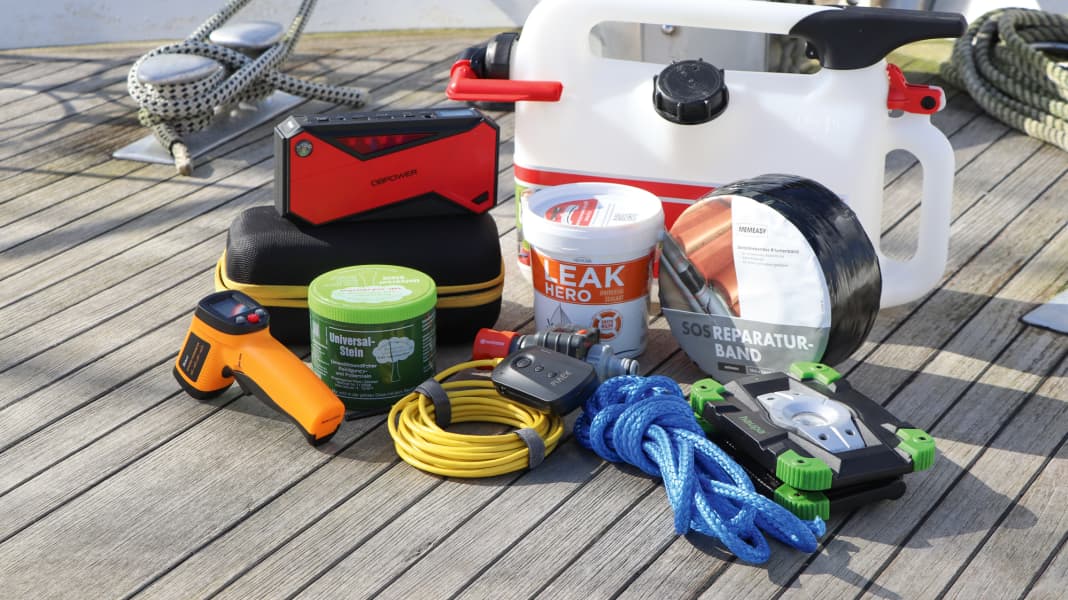
Who doesn't know the old problem? You enthusiastically bought a new piece of equipment at the boat show, such as a new reading lamp for the bunk. Finally, good light during the evening reading time on board.
The lamp is also mounted quickly: two screws - done. But now the plus and minus have to come from somewhere, which are drawn from the switch panel behind the interior fittings to the lamp. However, the interior panelling often cannot be removed but is glued in place. It is therefore necessary to drill holes on both sides of the components - a tried and tested method (for lack of alternatives) - in order to insert the cable on one side and "fish" for it with wire and hooks on the other. A Sisyphean task, as it constantly gets stuck or bent. Only by listening can you guess where it is behind the wall.
How much easier would it be if you could see where the wire is going? For example, with a "helper" that you won't find at any boat chandlery: an endoscope from the internet. It transmits directly to the smartphone via WLAN and can even be modified at the tip with a hook. And now the work is child's play: a little up, a little forward, the cable hooked on and pulled through. It's wonderful when someone comes up with a gimmick like this. We present 19 such "helpers" below.
1. temperature at a glance
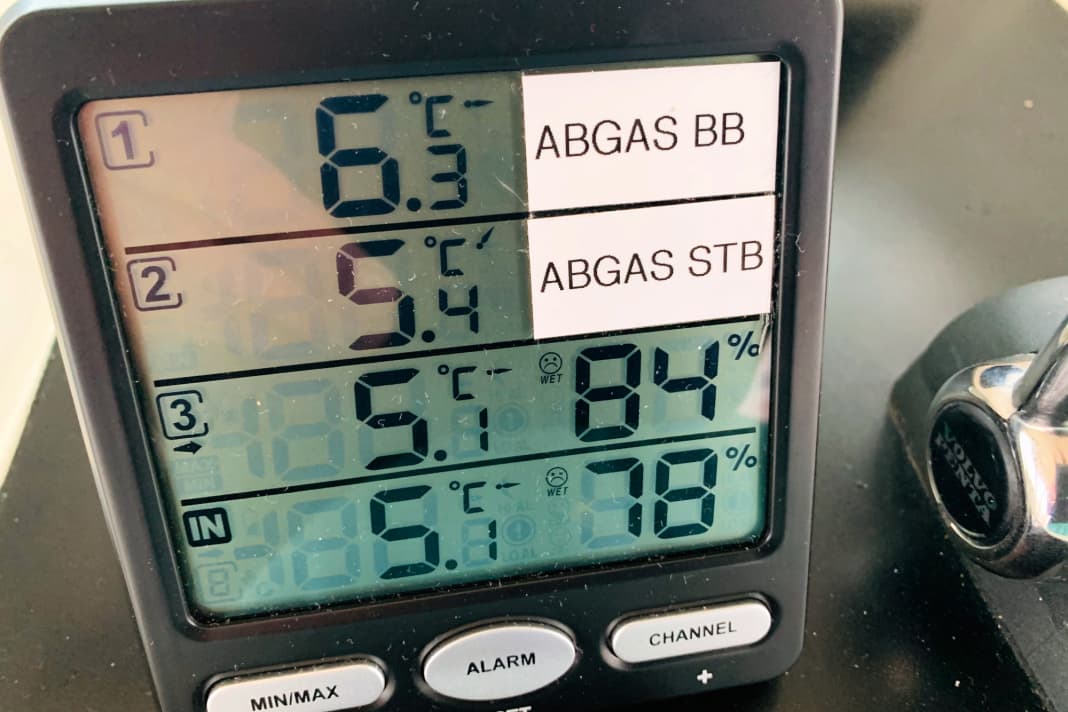


Radio thermometer
There are many reasons to measure the temperature on board. And if you are thinking about buying a new wireless thermometer for the cabins or the driver's cab, you should consider choosing a device with four sensors instead of a normal 1-channel device. Why? If you attach a sensor to the exhaust hose with clamp tape or cable ties (only for inboard engines), you can easily monitor the function of the engine cooling system. Care should be taken to keep the sensor as far away as possible from the (very hot) exhaust manifold. Although the absolute temperature values are not very meaningful, an unusual increase can be diagnosed, which would indicate a possible fault in the cooling system. The battery of such sensors lasts for around a season. A useful side effect: depending on the device, alarm values can even be set or the humidity monitored. In dual-engine systems, the temperatures of both engines can also be compared with each other, whereby deviations of up to five degrees are not uncommon.
Prices: from 25 euros on the Internet or in electronics stores >>e.g. available here
2. drip-free




Petrol can
Anyone refuelling petrol engines in the countryside should be very careful not to spill a drop. According to a study, 100,000 litres of petrol are "spilt" every year in the USA when refilling garden tools. This is why the Swiss company Birchmeier, a manufacturer of spray bottles, has developed a new type of petrol canister. The "Rapidon 6" is extremely handy thanks to its two handles, has a capacity of eight litres and its ingenious closure technology allows the fuel to be dispensed almost to the drop.
To fill, first fold out the filling tube at the front and a valve opens at the same time. Next, the push button at the back of the handle is released. Similar to a garden sprayer, the liquid starts to flow when the button is pressed. A spring mechanism interrupts the flow immediately when the pressure on the button is released.
Prices: from 28 euros at various online retailers >> e.g. available here
3. sealing where it leaks
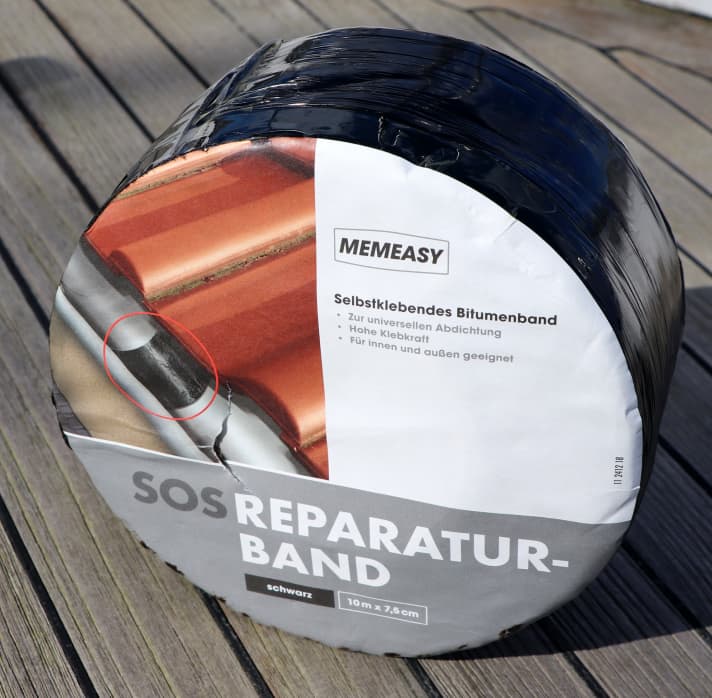
Bitumen tape
The cooling water pipe is dripping, the exhaust system is leaking vapours, the window seals are letting rain through - there are all kinds of leaks that can only be properly repaired in port. Until then, however, they cause trouble and worry en route. Self-sealing bitumen tape from the DIY store is suitable for this case. Originally intended for sealing seams on gutters or roof covers that are difficult to access and therefore difficult to seal, the flexible and weather-resistant tape with very good adhesive strength is also suitable for quick solutions on board.
Prices: from 15 euros (10 m x 7.5 cm) in DIY stores or online
4. mend quickly
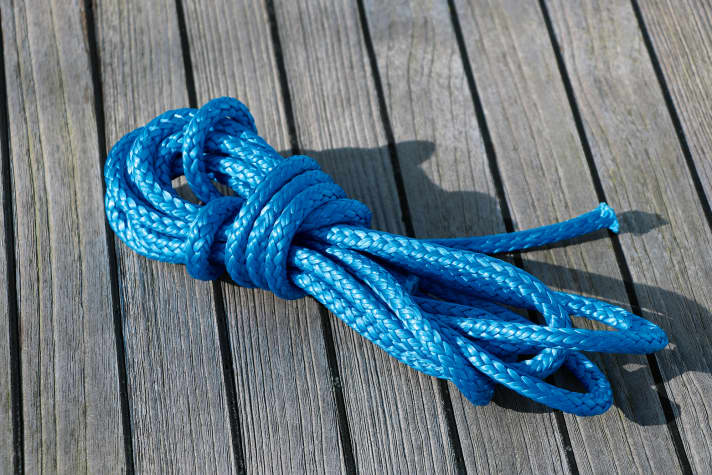
Dyneema lines
Whether as a makeshift railing wire, emergency steering rope or as a makeshift dinghy mount - a few metres of Dyneema line can replace or repair almost any damaged area. Lashing broken metal pipes is also easy to do. The high-performance lines are very light and space-saving, but at the same time stronger than a wire rope.
For comparison: an ordinary railing wire (7 x 7) with a core thickness of 4 millimetres has a breaking load of 850 kilograms. A Dyneema line of the same thickness, on the other hand, has a breaking load of 1300 kilograms - and that with the diameter of a flag line. A 6 millimetre thick line even has a breaking load of 4.3 tonnes. When it comes to improvisation, Dyneema is certainly a good basis. And when it comes down to it, you can even crane the whole boat on it. But beware: every knot reduces the breaking load of a line by 30 to 50 per cent. So if in doubt, it is better to choose a thicker line.
Prices: One metre of Liros D-Pro in 4 millimetre thickness costs around 2.50 euros, the thicker 6 millimetre line around twice as much.
5 "Plan B" for binoculars
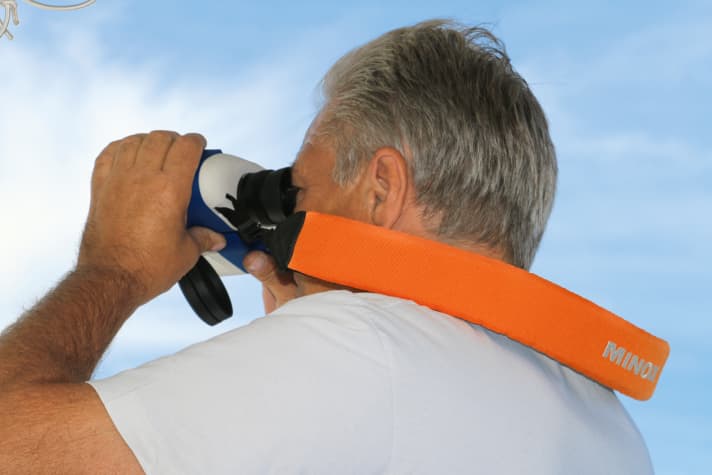
Belt with buoyancy chamber
If you don't spend a lot of time on board, it takes time to get used to sudden and unexpected movements of the boat. It's a shame if you lose your balance and possibly drop something in the water, such as your precious binoculars. That's why almost every binocular manufacturer supplies its binoculars with a carrying strap. However, if this is not placed around the neck, it is of no use at all. As a "plan B", some manufacturers also offer a strap with a buoyancy body, which offers a second chance in the event of an emergency, as it keeps the binoculars on the surface of the water. The Minox strap is comfortable to wear, made of orange neoprene and is clearly visible in the water thanks to its colour.
Prices: approx. 40 euros (Minox strap), but other manufacturers also have similar models
6. goodbye itchy mosquito bites
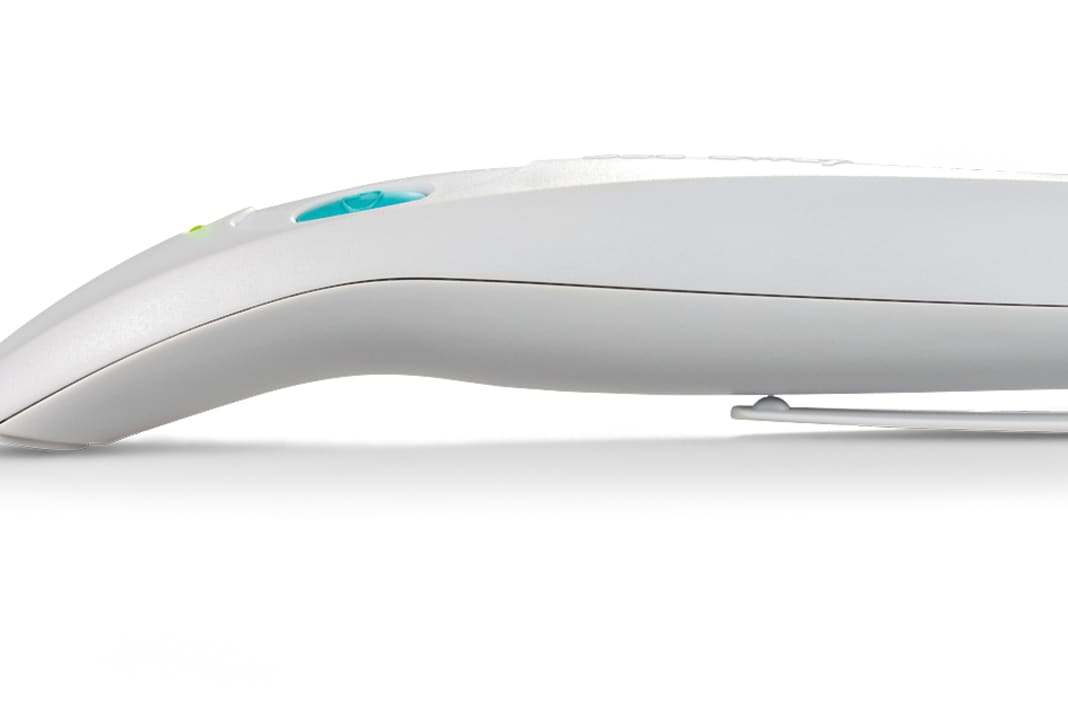


Heat treatment
As beautiful as cosy anchor bays are, they have one disadvantage: especially in summer, they are a favourite haunt of mosquitoes. If, despite the mosquito net and citronella candle, a few animals have found their way onto your skin, the itching is very unpleasant. Of course, there are medicines and household remedies to relieve the itching. One purely physical aid is the "Bite Away". Shaped like a pen, it has a heating plate at the tip which is held on the mosquito bite and heats up to 51 degrees Celsius. There are two modes: normal (5 seconds) and short (3 seconds) for sensitive people. The heating effect should not be underestimated. But it's worth putting up with the brief pain, because in most cases the itching and swelling disappear afterwards. According to the manufacturer, the heat activates signalling pathways and has a positive effect on immune and inflammatory reactions. The regulation of the release of histamine and degradation enzymes should dampen the inflammatory reactions.
Price: approx. 30 euros in pharmacies, drugstores or on the Internet >> e.g. available here
7. measuring instead of estimating
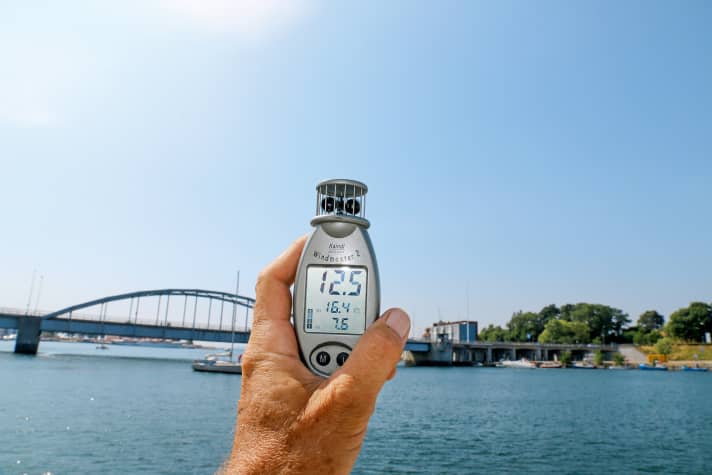
Hand anemometer
If you have a high superstructure on your boat and are therefore susceptible to crosswinds, you should take a quick look under the cockpit tent before casting off to get an idea of the wind conditions. If you want to go one step further than just sticking your wet thumb into the wind, you can use a small hand-held anemometer at the helm to compare your estimated wind force with precise measurements. It's also a great toy for the kids ("Who can blow the hardest?").
Prices: between approx. 30 and 120 euros, depending on design >> e.g. available here
8. camera for the hidden
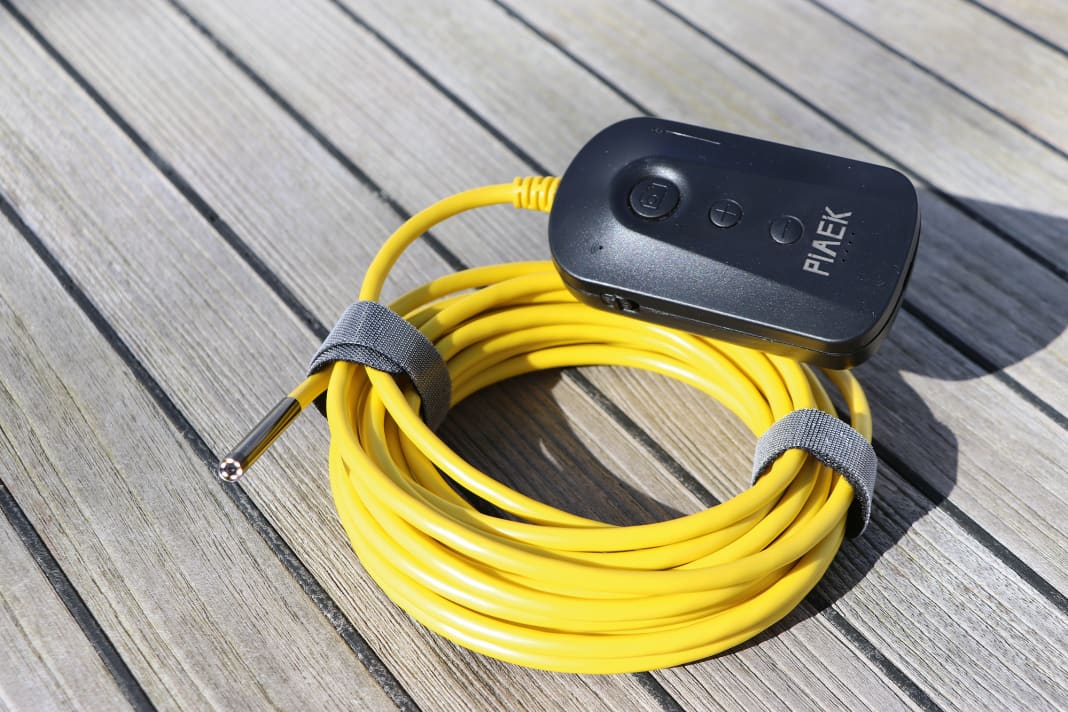


Smartphone endoscope
It is particularly helpful to be able to look behind fixed components or into hidden cavities when carrying out repairs and tinkering with the boat. The endoscope can be connected to a smartphone via Wi-Fi, which then serves as a display device. The camera has six dimmable LEDs and is waterproof to IP67 (temporary submersion). Alternative heads with 90-degree mirrors, magnets or hooks can also be attached to the camera.
Prices: between approx. 25 and 60 euros on the Internet, depending on the model
9. safely to your destination
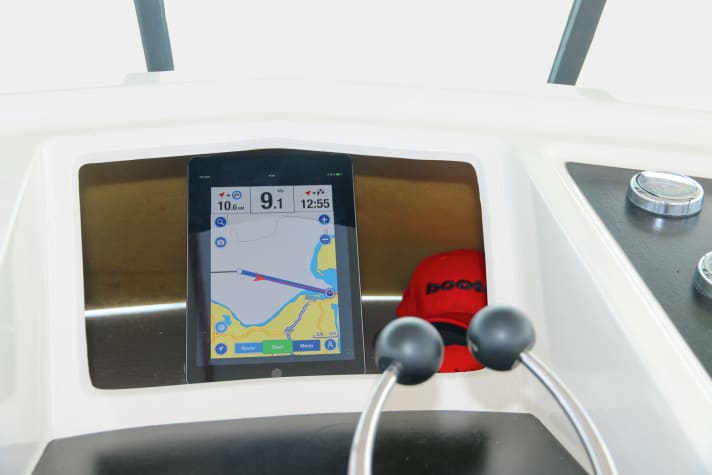
Tablet navigation
The purchase of a chart plotter is not worthwhile for every boat. This is because in addition to the high purchase costs of the device, there are also the annual costs for updating the charts. If the boat is only used occasionally on holiday, it can make much more sense to simply navigate with a tablet. Many boaters already have one for occasional surfing on the internet, YouTube and reading e-books. The Yacht Navigator app from Delius Klasing Verlag can be downloaded free of charge from Google's Play Store or Apple's App Store. The maps must then be downloaded within the app and only cost 19.99 euros per area. Similar map apps are also available from Garmin and Navionics, but these only offer larger map sets and are correspondingly more expensive. However, they also offer the option of displaying AIS signals and submitting ratings for harbours and anchorages via the "Active Captain" community. When buying a tablet, it is essential to ensure that it has a built-in GPS. These are usually models that also have a SIM card slot.
Price: Simple Android tablets are available from 100 euros, navigation-capable Apple iPad mini from 589 euros
10. how much water is in the tank?
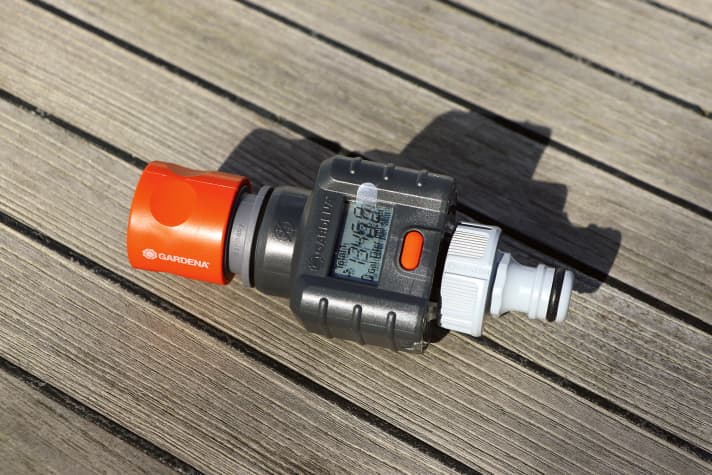
Flow meter
The tank gauges installed by the shipyard are often not very accurate. How much more pleasant it is to know exactly how much water has flowed. Although there are also flow meters with a remote display unit for boating, these are often very expensive. A model from Gardena that is used for a different purpose is much cheaper. Either mounted between the tank and the point of use or on land when topping up from the tap - you get a feeling for how much fresh water is really being used.
Price: available in DIY stores or on the Internet for around 20 euros >> e.g. available here.
11. (K)A hole is in the bucket
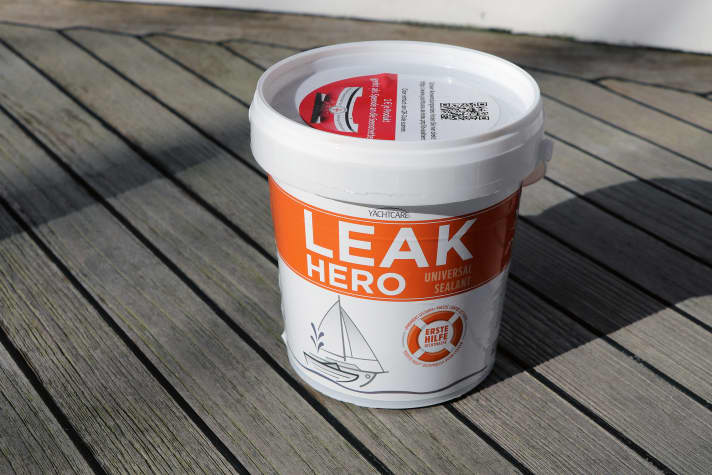
Sealing grease
A small bucket of "Leak Hero" helps with leaks caused by a collision or a technical defect with water ingress. The wax-like sealant is simply taken from the bucket and pressed into the crack or opening. Inflowing water does not hinder the adhesive effect in the slightest, the agent adheres to the surface and seals the opening. If a small trickle forms over time, the sealant can simply be brushed over it again. A good makeshift solution to at least get the leaking boat back into the harbour before the damage is repaired professionally.
Price: The "Leak Hero" can contains 625 ml of sealant and costs around 26 euros
12. power siphoning
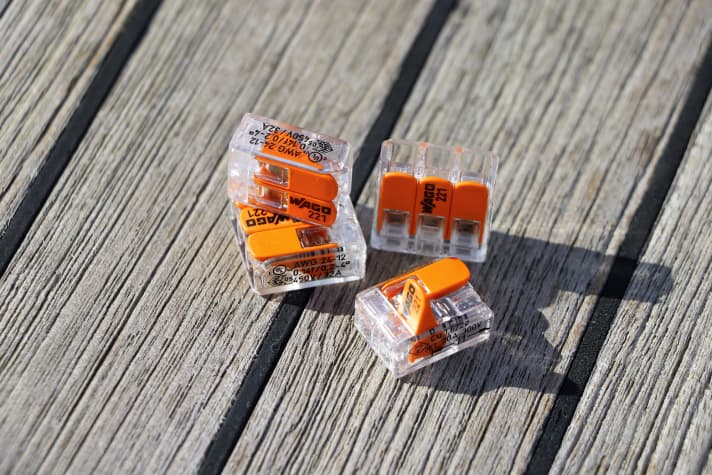
Wago terminals
For many boaters, on-board electrics are a mystery. "Just don't change anything", they think. But if they do buy a new gimmick, it's usually not worth having a technician come and connect the power supply. A positive and negative cable are quickly located and clearly identified. And now? A crimp connector? Or a lustre terminal? Why not a Wago terminal, the lustre terminal of the 21st century? Lever up, cable in, lever down - and you have a secure power connection.
Price: The packet of ten clamps costs around 3.25 euros in DIY stores >> e.g. available here
13. measure with pinpoint accuracy
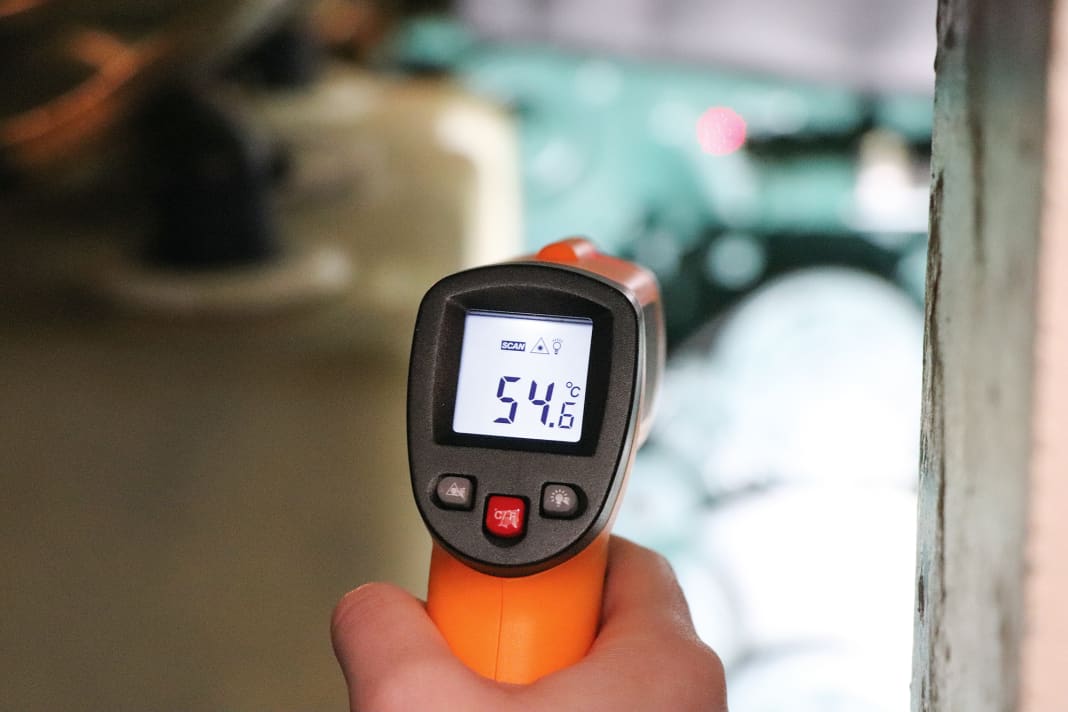


Laser thermometer
The new cooker works well, finally enough power. But the storage box next door gets quite warm. Have I perhaps built it a little too close to the wall? A laser thermometer, which can be used to measure the temperature on a surface with (laser) pinpoint accuracy, is ideal for such and similar cases. It is also exciting to measure individual components in the engine compartment, as the measuring range is between minus 50 and 550 degrees Celsius. There are even plenty of uses in everyday life, such as checking the optimum heat of the frying pan for the perfect steak ...
Price: between 20 and 30 euros in DIY stores or online >> e.g. available here.
14. baking without an oven
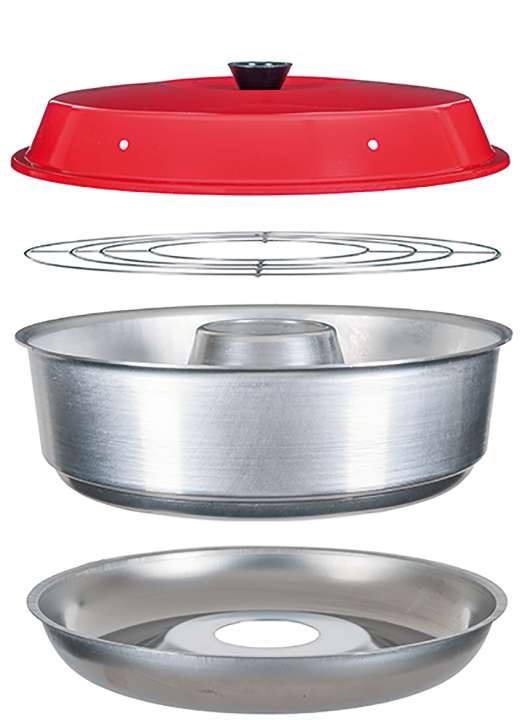
Omnia baking tray
On long boat journeys, the dishes suitable for two burners on board are usually exhausted at some point. How nice would it sometimes be to have an oven and expand the repertoire a little? The Omnia from Sweden was actually developed for campers, but has also been an insider tip for boaters for years. It may not be a fully-fledged oven, but it has the same effect. Pizza, lasagne, meatloaf or even bread and rolls - everything is possible with it. However, its bundt cake shape means that every dish baked in it has a hole in the centre. Nevertheless, anyone who has it will be delighted. The Swedes are also very multi-media savvy and present a host of recipes and tips on the omniasweden.com website.
Price: The Omnia without accessories costs approx. 45 euros, as Set with baking tins approx. 75 euros
15. good grip in rough seas
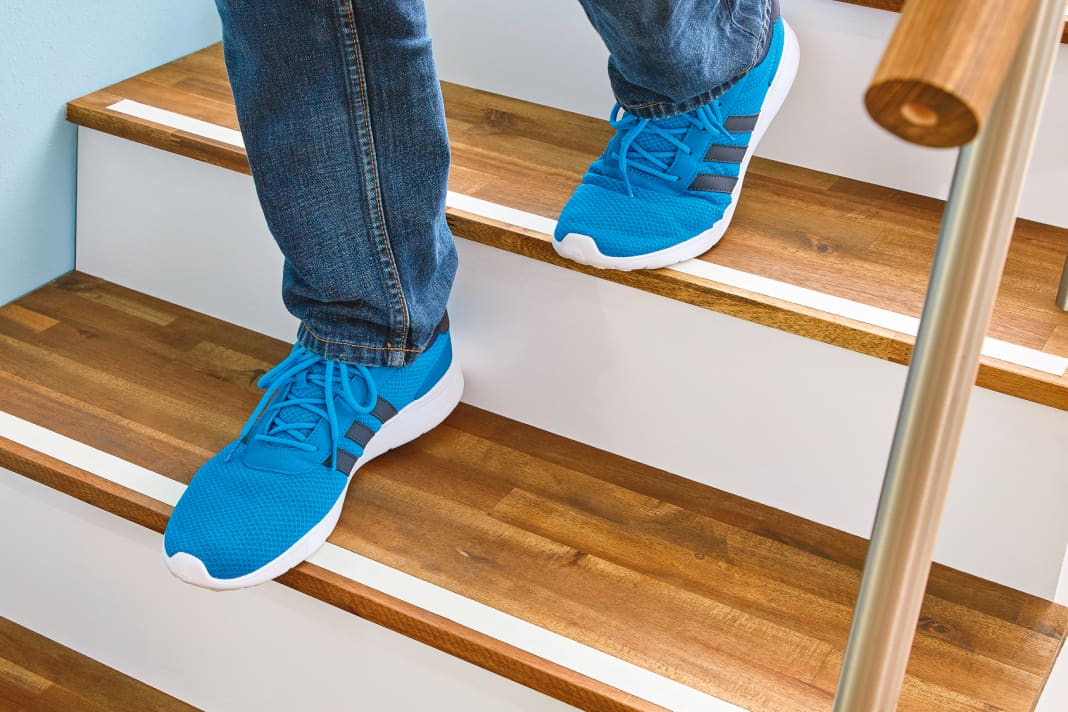


Anti-slip adhesive tape
On the deck of the boats, the shipyards have usually provided sufficient non-slip surfaces by moulding anti-slip studs into the gelcoat. However, in the cabin, the smooth and clear varnished wooden surfaces often offer little grip in rough seas. The anti-slip tape produced by Tesa is suitable for such cases. It is extremely UV and weather resistant and is suitable for both indoor and outdoor use. After thoroughly cleaning and degreasing the surface, it can simply be cut to length and stuck on. It is not only available in black and transparent, but also in fluorescent yellow, which is particularly suitable for marking steps and walkways because it glows in the dark.
Price: available from DIY stores or various online retailers. Five metres of 25 millimetre wide tape cost approx. 10 euros
16. no condensation
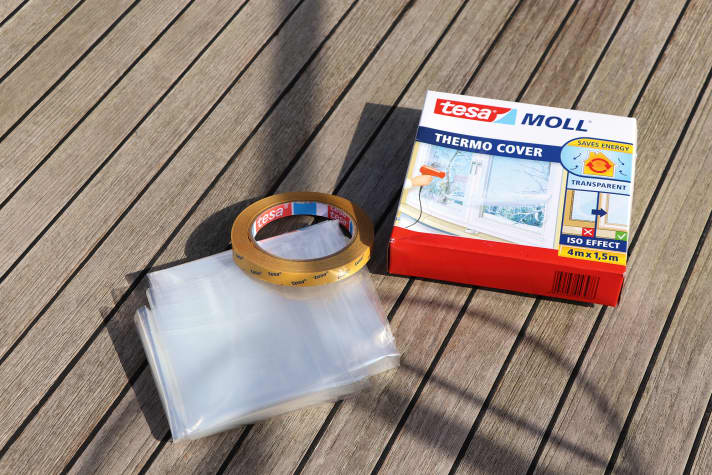
Thermofoil
To prevent moisture from condensing on the panes in cold weather, windows in houses are at least double-glazed. The spaces between the panes serve as an insulating layer so that the inner pane is warmed by the room temperature and no cold bridge forms where condensation collects. However, a pane is not necessary for double-walled windows, a thin film is sufficient. That's why Tesa has developed one that can simply be stuck to the window frame. To ensure that the view is still clear, "Thermo Cover" is then blown smooth and tightens until all the creases have disappeared. And not only that: The condensation also stays away.
Price: available in DIY stores or on the Internet, 4 metres by 1.5 metres of film cost approx. 16 euros >> e.g. available here
17. everything clean
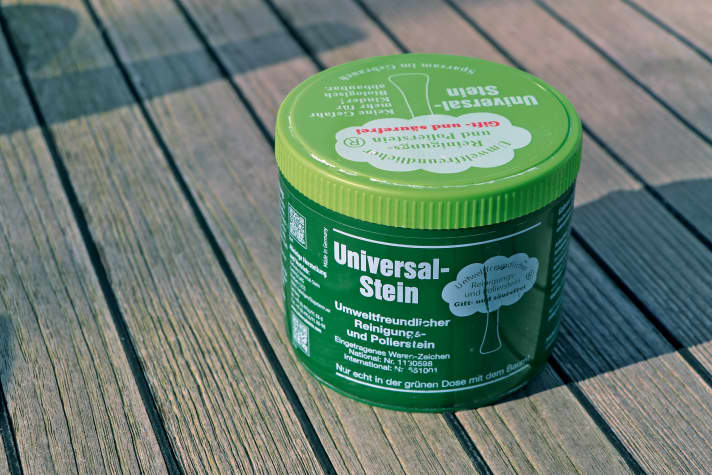
Cleaning stone
Many people know it from household trade fairs: the "universal stone" in the green tin, which even removes burnt-on food from the ceramic hob. What hardly anyone knows is that it is also a miracle product on board that even removes sun cream stains from old gelcoat without damaging the surface. What's more, the cleaning stone is completely biodegradable. It is easy to use: wet the sponge and rub it on the stone until it turns slightly white. Then polish the dirty area until the dirt comes off, then rinse with water.
Price: available in DIY stores or on the Internet. The 900 gram tin including sponge costs approx. 25 euros >> e.g. available here
18. floodlight for all occasions

Headlamp with power bank
Many battery packs have a small lamp because it can be advertised as an "extra". With this headlamp from Haupa, however, the power bank (4.4 Ah Li-Ion) with USB connection is the additional function, as the high-performance lamp floods the entire boat with 1800 lumens/20 watts of power. The sturdy die-cast aluminium housing also makes the spotlight an indispensable aid when working in the engine compartment.
Price: available on the Internet for approx. 56 euros >> e.g. available here
19. enough electricity everywhere
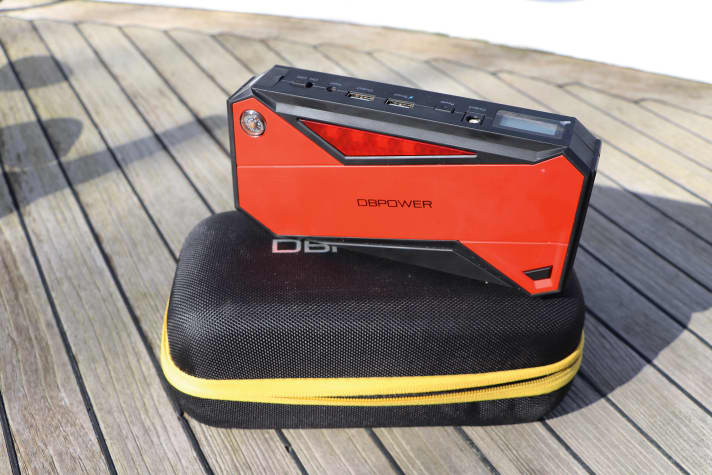
Powerbank with jump-start function
Modern battery technology makes it possible for even small power banks to deliver capacities of 18 Ah and starting currents of up to 800 A. This means that most boat engines can be started without any problems if the worst comes to the worst. Such batteries also have charging outputs for mobile phones (USB) and other consumers. For example, you can easily power your tablet for an evening of TV or the LED searchlight during a night-time mooring manoeuvre independently of the on-board power supply.
Price: from approx. 60 euros on the Internet or in car accessories shops

